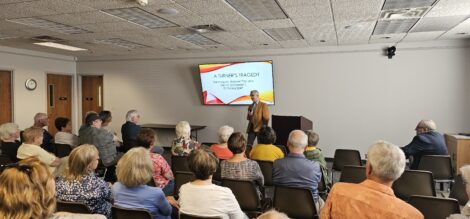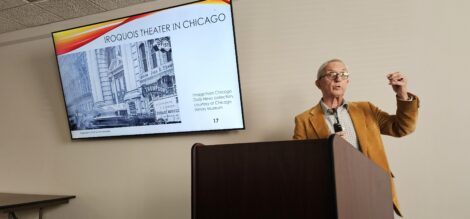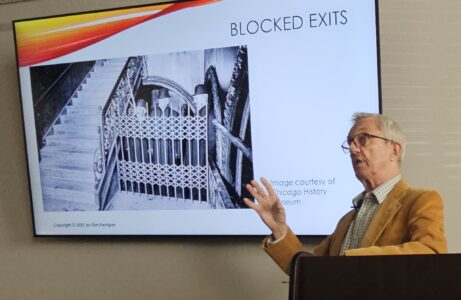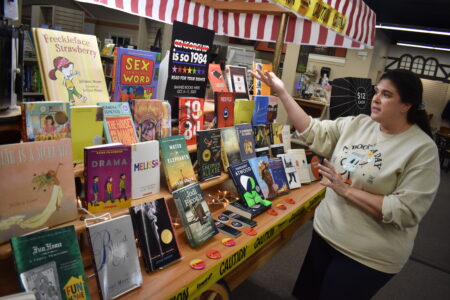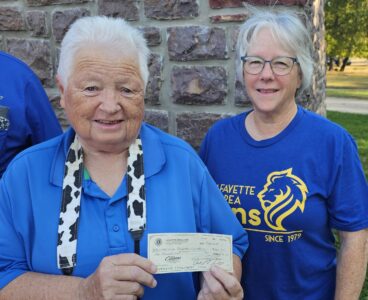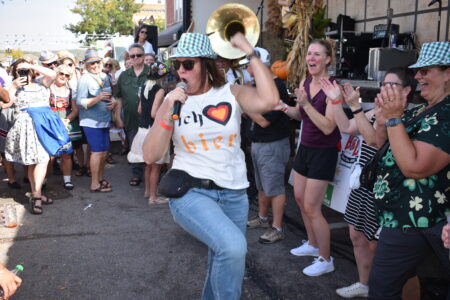A Turner’s tragedy: The Iroquois Theater fire’s New Ulm connection
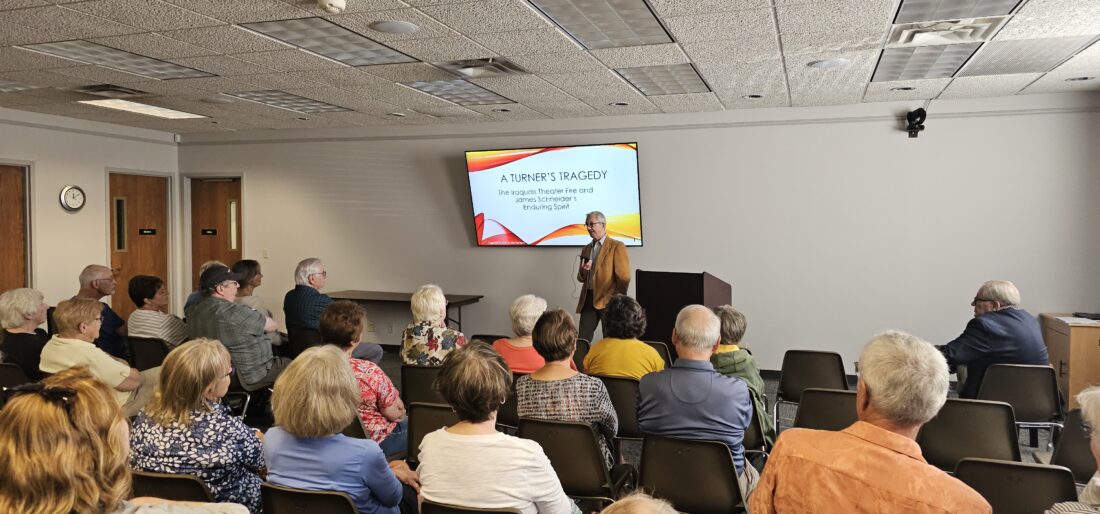
Kim Kerrigan presents “A Turner’s Tragedy” at the Brown County Historical Society’s Lunch and a Bit of History program. His research traces the life of James Schneider, a New Ulm Turner Hall instructor who died in the 1903 Iroquois Theater fire.
NEW ULM — Kim Kerrigan, a Boston resident and grandnephew of James Schneider, presented “A Turner’s Tragedy” Thursday at the Brown County Historical Society’s “Lunch and a Bit of History” program at the museum annex.
Kerrigan detailed his research into Schneider, a gymnastics instructor who taught at New Ulm’s Turner Hall from 1897 to 1901 and died in the 1903 Iroquois Theater fire in Chicago. The presentation focused on Schneider’s life, the fire’s circumstances and its impact on Kerrigan’s extended family.
Kerrigan grew up in Clinton, Massachusetts, a town with a strong German Turner community. He attended Minnesota State University, Mankato.
Kerrigan’s research into his great uncle began after his aunt mentioned Schneider died in the fire. That detail led to a 40-year investigation involving genealogical records, historical archives and interviews. In 1985, Kerrigan visited his mother’s cousin, Hattie, then 94, at the Quinn Nursing Home in Clinton. She revealed that the fire affected both sides of her family. Her mother lost her brother James, and her father lost his sister Clara, who was married to Herman Dreisel. All seven people in the theater party were related to Kerrigan.
Kerrigan said his great uncle James Schneider emigrated from Bavaria in 1887 and settled in Clinton. After training at a gymnastics teacher seminary in Milwaukee, he accepted a position in New Ulm teaching physical culture, drama and fencing. At the time, New Ulm had a population of about 5,000.
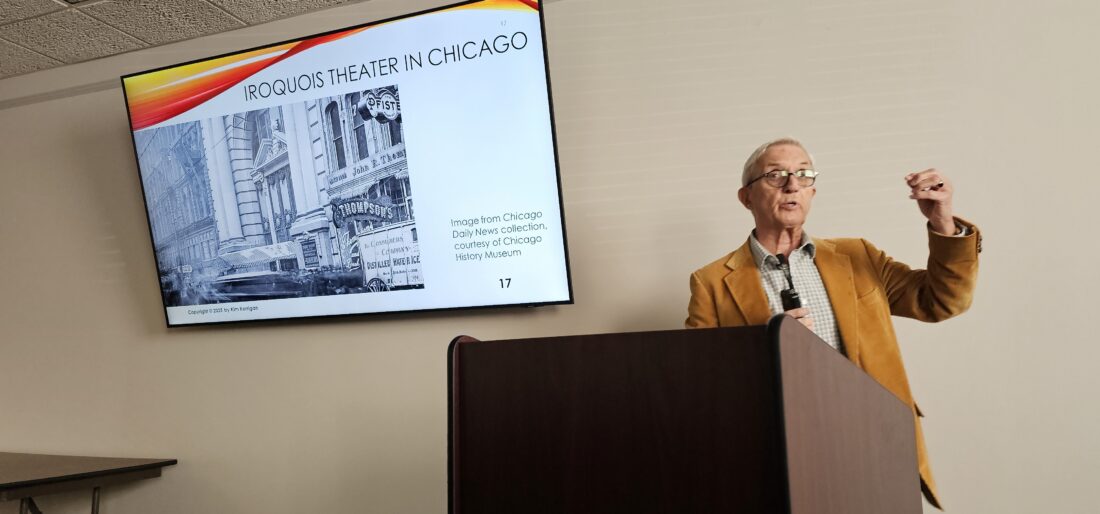
Historian Kim Kerrigan talks about the The Iroquois Theater in Chicago. While its exterior was advertised as fireproof, the lavish interior proved a tinder box, leading to one of the deadliest theater fires in U.S. history.
While teaching in Milwaukee, Schneider met Dora Mueller. She declined to move to New Ulm when he proposed. Through his mentor Herman Dreisel, director of athletics in Chicago, Schneider secured a position at the Aurora Turnverein. He and Mueller married in 1902.
On Dec. 30, 1903, Schneider and Mueller attended a matinee performance of “Mr. Bluebeard” at the Iroquois Theater with five family members. The theater opened 37 days earlier and was considered one of the most elaborate in Chicago.
During the second act, a stage light ignited a fire. More than 600 people died within 15 minutes. Safety violations included locked exit gates, incomplete fire escapes, an asbestos curtain with insufficient asbestos content, covered exits and inward-opening doors. Schneider reportedly told family members before dying that he saw Mueller caught in the stampede and believed she had died.
Kerrigan described the scene based on survivor accounts. Patrons panicked, tore clothing and pushed toward exits. Some jumped from incomplete fire escapes, resulting in fatalities and injuries. Schneider fell 50 to 60 feet from a third-level escape onto icy pavement. He died from his injuries. All seven members of the Schneider-Dreisel party died. No one was prosecuted.
The fire led to sweeping reforms in theater safety. Panic bars became mandatory on exit doors, which were required to open outward. Steel fire curtains, visible exit signage, fire extinguishers and wider aisles were introduced. Flammable materials were restricted, and routine inspections became standard.
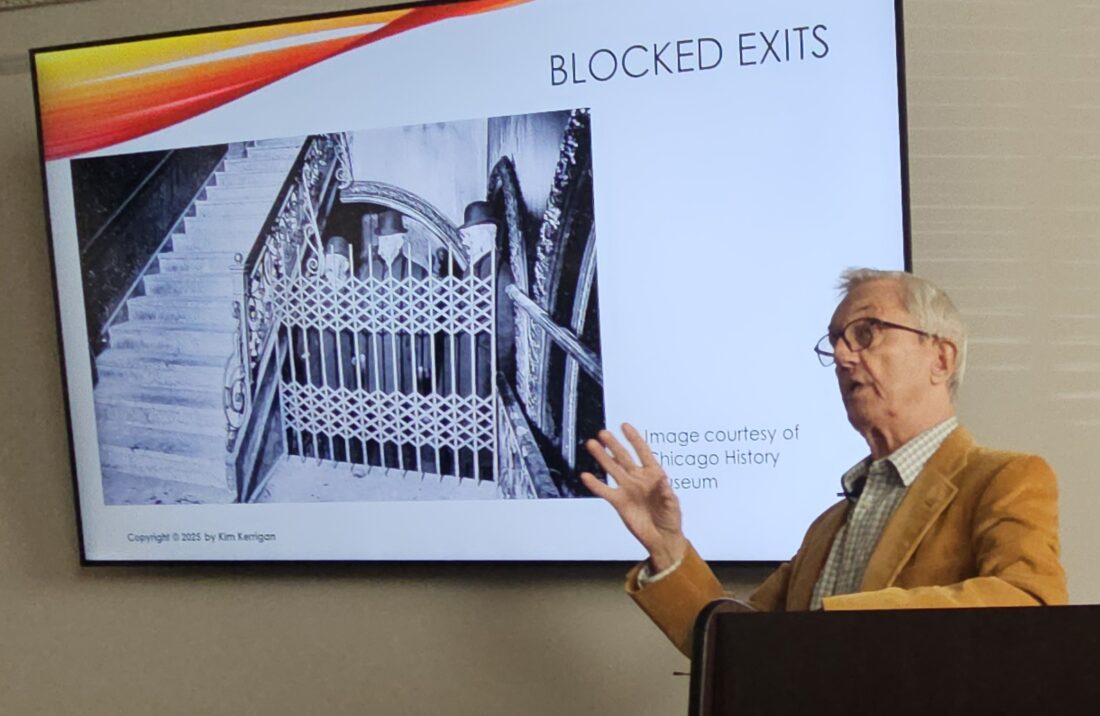
Kim Kerrigan discusses the circumstances that led to his great-uncle’s James Schneider’s death in the Iroquois theater fire of 1903
Kerrigan said the tragedy echoed through generations. Several relatives who died in the Iroquois Theater fire had descendants or extended family members who later perished in the 1942 Coconut Grove nightclub fire in Boston, which claimed 492 lives. Both events led to major safety reforms and remain among the deadliest building fires in U.S. history.
Kerrigan collaborated with Darla Gebhard, research librarian at the Brown County Historical Society, for four decades. He advised attendees to interview older relatives and preserve family. He encouraged attendees to document family conversations, noting that small details can lead to broader historical understanding.
- Kim Kerrigan presents “A Turner’s Tragedy” at the Brown County Historical Society’s Lunch and a Bit of History program. His research traces the life of James Schneider, a New Ulm Turner Hall instructor who died in the 1903 Iroquois Theater fire.
- Historian Kim Kerrigan talks about the The Iroquois Theater in Chicago. While its exterior was advertised as fireproof, the lavish interior proved a tinder box, leading to one of the deadliest theater fires in U.S. history.
- Kim Kerrigan discusses the circumstances that led to his great-uncle’s James Schneider’s death in the Iroquois theater fire of 1903

